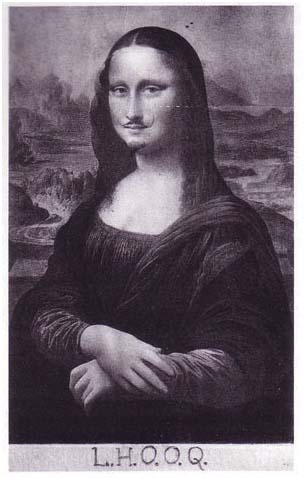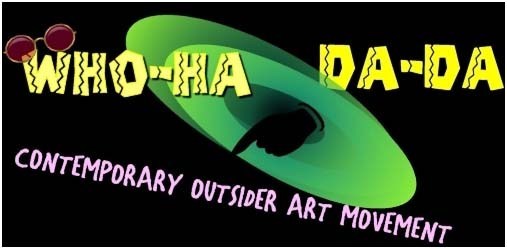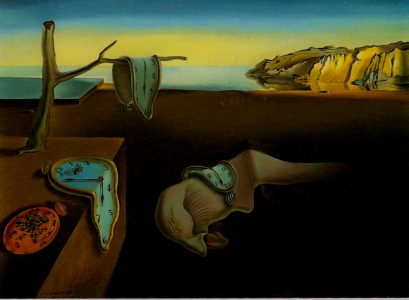Worldwide Dadaism Movement | Movement of Dada Artists
Who-Ha Dada Movement | What Is the Dada Movement
Artistic periods – despite how long ago they existed – will always find their way into influencing some people. Despite Dada existing in the early 20th century as a result of the war – it continues to filter through artists today and still influences their artwork. Whilst not being true to its original purpose Dadaists combine Dadaism and contemporary artistic thoughts into creating unique works that still provide an interesting commentary on society. Dadaism itself was influenced by some of the big avant-garde movements such as cubism, futurism, constructivism and expressionism so it’s little wonder that it finds itself into artistic expression today – especially considering that the core values of Dadaism such as mockery of materialism and overt nationalism are still very much relevant today.

Responding against a world gone mad, destroyed by both war and fascist ruling, the Dada anti-art movement quickly became both destructive. Dada scholars and artists were concerned with shock, challenge, and nonsense. They severely rebelled against the revulsion of the world war, the wantonness of European culture, the lack of foresight with the blind faith of technological advancement, and the ineffectiveness of religious and moral codes in a world of upheaval. Dismissing all convention, they looked for complete creative freedom.
Dadaism as an artistic style is quite hard to track. Unless one actively defines themselves as a Dadaist – Dadaism can become little more than an academic or artistic adviser labelling it as something it may or may not be. The reason for this lies in the very nature of Dada art, since its intent was to be in opposition for all norms of bourgeois culture the movement could barely be in support of itself. Further, Dada art varies so much so that it can often be considered as an incoherent style. As such it’s difficult to label something when the very idea of the movement is supposed to be anti-label. Consider then the difficulty of modern artists who like to delve into Dadaist attitudes and thoughts and create artworks based on Dadaism. Peter Fleming writes in 2015:
‘Dada was designed to be ghost-like and short-lived. An intransigent and inconsequential mockery of the vain conceit that cultural monuments stood for something immortal, something ever-lasting. Self-immolation was written into Dada’s very DNA, its main aesthetic tenant its brevity and self-destructiveness. There are no world-renowned Dadaists on the scale of a Hemingway, or a Shostakovich, or a Picasso, and no Dadaist produced a particularly large body of work– not least because so many of the good ones killed themselves as the ultimate expression in Dadaist performance art. If you’ve never even heard of the movement, you’re hardly to be blamed– the Dadaists were simply there one day– like a wisp of smoke swirling briefly, illuminated by a moonbeam– and the next were gone. Rarely do artistic movements fulfil their stated intentions so completely– Dada was a fully-realized, soulless expression of Dionysian excess. A howl of existential despair.And a casualty of war.’
What many people do not realize is the artistic legacy that Dadaists have left on the structure of the art world. They have influenced various artists including Yoko Ono who reappropriated Duchamp’s urinal artwork, but to a more fundamental extent, the core of Dadaism has filtered through societal values as a way of life. This notion can be seen through the performance of contemporary artists such as Madonna and Lady Gaga, whose very popularity lies in their very acceptance of things outside the norm.

Having acquired Marinetti’s talk and attack upon all imaginative and social customs, Dada was a noteworthy freeing development that keeps on inspiring innovation and rebellion. Dada was conceived as a challenge against war, and its ruinous and exhibitionist activities turned out to be more ridiculous and compelling after the Great War finished.
In 1921 and 1922, contention and contradiction broke out among its individuals, and the development split into groups as it tends to do after a movement has existed for a short time. French essayist Andre Breton (1896-1966), who was taking up with the Dadaists, rose as another pioneer who accepted that Dada had lost its importance and that the only way forward in its existence was to develop new relevance and direction; there he believed, were essential. Lacking a leader to tackle the movement and with its individuals confronting the new thoughts that in the long run would develop into Surrealism, Dada flopped and stopped to exist as an cohesive movement before the end of 1922.





